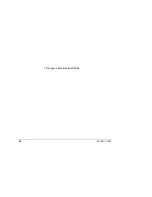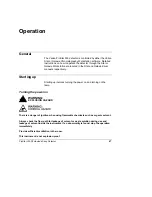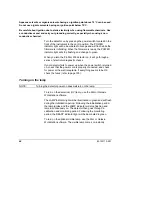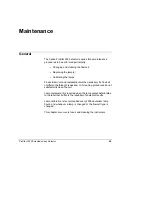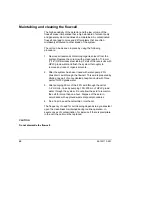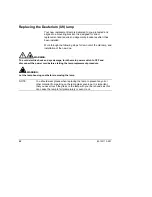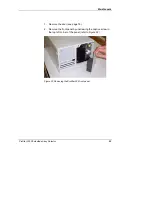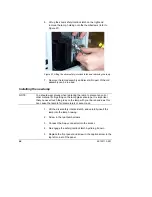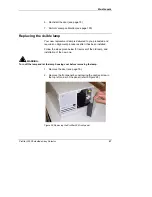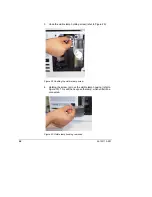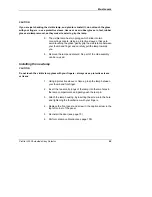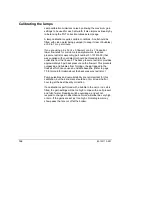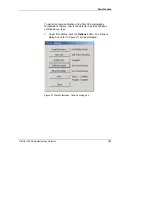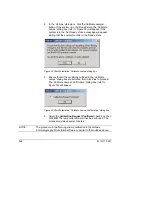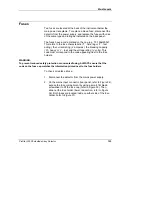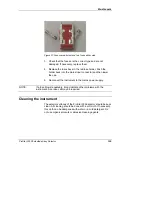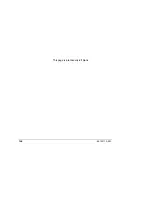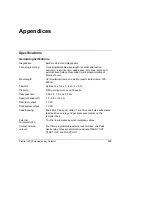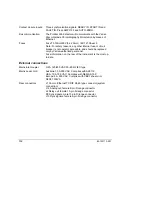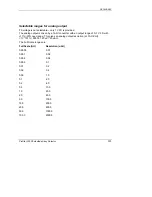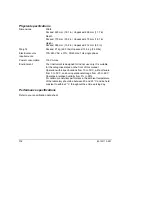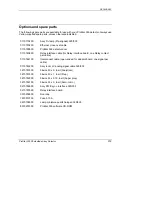
100
85-102113-00:1
Calibrating the lamps
Lamp calibration minimizes noise by allowing the maximum gain
settings to be used for each slit width. It also improves linearity by
re-balancing the 0%T correction tables as lamps age.
A lamp calibration requires certain conditions. A cell should be
fitted, with clean water being pumped (to keep it clear of bubbles)
at 0.2 to 1 mL per minute.
If you are using a 9 x 0 or 4 x 0 flowcell, or a 9 x 1 flowcell at
lower flow rates for microbore to analytical work, the back
pressure restrictor assembly (part number 01-107433-00) that
was supplied with your detector should be threaded into the
outlet line from the flowcell. The back pressure restrictor provides
approximately 40 psi back pressure on the flowcell. This prevents
outgassing and bubbles from forming or being trapped in the
flowcell, which can cause an unstable baseline. (Refer to page
73 for more information about the back pressure restrictor.)
Pump pulsations and overall stability are not important for this
calibration, but the instrument should be on for at least half an
hour to get the best linearity correction.
If a calibration is performed with a bubble in the cell, or no cell is
fitted, the gain settings will be too high to cope with a cell present
and full of water. Readings will be overrange, and will not
respond to changes in absorbance. Noise will either be very high,
or zero. If the gains are set just too high, chromatograms may
show peaks that are cut off at the bottom.

